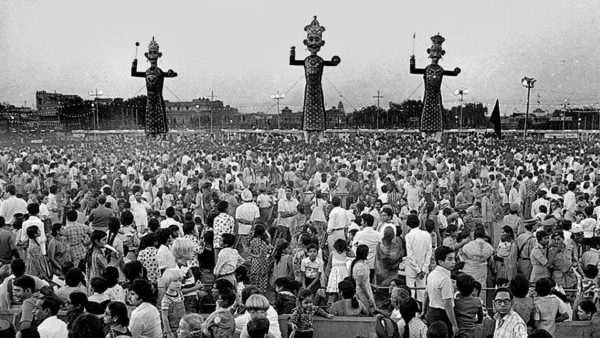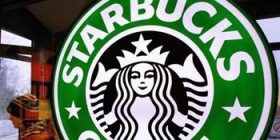One Dussehra morning in the 19th century, Mughal emperor Bahadur Shah Zafar watched as a Neelkanth bird (Indian Roller) was set free from Lal Quila. According to memoirs of Munshi Faizuddin, a noble in the court of the Mughal emperor, it was among several rituals that were observed to mark Dussehra at the Delhi fort.
The memoir Bazm-e-Akhir says that on the Dussehra afternoon horses with gold and silver saddles were paraded below the jharoka behind the fort in raiti — the dry land between Yamuna bank and the fort wall.
“The incharge of the royal stables would prepare horses for the occasion. He would apply heena on their hooves and colour their foreheads. The emperor chose the best dressed animal,” author and historian Rana Safvi said, talking about the Mughal-era Dussehra celebrations in Delhi.
Dussehra, a Hindu festival that marks the victory of Ram over a demon king, is preceded by nine days of celebrations during which Ramlilas are staged. It is believed that Ramlilas began in Delhi 350 years ago, when Mughal king Shahjahan built.
Faizuddin’s accounts, Dussehra, Diwali, or Eid were celebrated with equal zeal in the fort under the patronage of the king.
“A falcon was made to perch on the emperor’s hand after the Neelkanth’s release. Falcon symbolised victory and success in Timurid traditions. The quatrains of Tulsi Das’ Ramayana were recited in Persian and Urdu. Ramlila was organised on all 10 days in raiti,” Safvi says.
The dramatic presentation of Ramcharitmanas on the banks of Yamuna had royal patronage.
In a series of essays on Delhi’s history, 19th century author and academic Maulvi Zaki Ullah writes that another performance was held at a distance of three miles from the city limits in Wazirabad cantonment for which the infantry regiment’s Hindu and Muslim soldiers jointly collected donations and made arrangements.
“Ramlila at Yamuna banks behind Lal Quila was meant for the city residents and also for the royal family, which continued at the same location for years. After the 1857 uprising, the venue was changed. First, it shifted to Tees Hazari Bagh and later it was played outside the Ajmeri Gate. People would carry the ashes of burnt Lanka homes as it was considered sacred,” said Swapna Liddle, convener, Delhi chapter of Indian National Trust for Art and Cultural Heritage (INTACH). Liddle is the author of ‘Chandni Chowk: The Mughal city of old Delhi’ and organises heritage walks.
The pond ‘Shahji ka Talaab’ at Ajmeri Gate served as the perfect backdrop for the ‘Kevat’ scene, where a boatman ferries Ram, Lakshman and Sita across Saryu river as they set out on their 14-year exile. The water body was levelled up later and Kamla Market was constructed at the location in 1950s.
Ramlilas after Independence
After the fall of Mughal Empire, the Ramlilas committees were run with the help of donations, a majority of which came from big city industrialists.
One such Ramlila, organised by Delhi Cloths Mills’ (DCM’s) workers near Bara Hindu Rao area, was sponsored by Shri Ram family, the owners of the factory. It had gained popularity because of its state-of-the-art revolving stage. Moreover, it was the first Ramlila in Delhi where Hanuman was shown flying in the air.
Apart from the residents of neighbouring localities — Karol Bagh, Regarpura, Anand Parbat, Dev Nagar, Azad Market, Shastri Nagar, and Shakti Nagar — the DCM Ramlila drew attendees from Haryana cities like Rewari, Sonepat and Panipat also. The Kishan Ganj station nearby played an important role in bringing people in large numbers from bordering cities.
Historiographer and famous Delhi chronicler RV Smith said those who could not afford to go to Ramlila Maidan went to the DCM ground. “Workers from Swatantra Bharat Mills would also join DCM Ramlila. The company put up a hoarding of their products at the venue. It was also known for its giant effigies. On one occasion, they were higher than the Ravan’s effigy at Ramlila Maidan,” he said.
The DCM complex turned into fair ground on Dussehra as several vendors would set up their stalls. Kiosks selling knick-knacks, wooden toys, sweets and counselling by doctors from Tibbia College were an added attraction at the DCM Ramlila.
“Doctors from Tibbia College would give free medicines. When they briefed about home remedies, people noted them on the piece of a paper,” said Om Prakash, a government employee, who has seen several performances at DCM ground. This production by mill workers was stopped around mid 1990s.
“It was a high-tech performance, where Hanuman flew over the audience. It had to be shut because the area was to be redeveloped into a residential complex for the factory workers,” said Shobha Deepak Singh, daughter of Lala Charat Ram of DCM.
Singh has also been organising a dance-drama based on the life of Ram in central Delhi since 1957 under the banner of Shriram Bharatiya Kala Kendra (SBKK). It was started at Feroz Shah Kotla ground but was moved to a new location — Kendra’s premises at Copernicus Marg — in 2000.
The production is a three-hour musical show in which complete Ramayana is played starting from ‘Kraunch Vadh’ to Ravan’s killing. It is performed to recorded dialogues and music based on classical and folk idioms.
Ramlila Savari
Ramlila Savari is a Dussehra tradition that has remained unbroken for over 170 years.
On all 12 evenings (starting from first day of Navratri to Dussehra), artistes dressed as Ram, Lakshman, Sita, and Ravan are ferried in floats that are part of a procession. The three-hour-long journey starts from Dauji temple at Esplanade Road and travels through the lanes of the Walled city — Dariba, Chandni Chowk Main Road, Nai Sadak, Chawri Bazaar, Chowk Hauz Qazi and Ajmeri Gate. It ends at Ramlila Maidan, where the actors enact crucial scenes from the epic. Large groups of music bands belting out bhajans and Hindi film songs also accompany them.
The procession follows the same route at night when it goes back to the temple after the day’s performances.
“Mughal emperor Bahadur Shah Zafar started the concept of Ramlila Savari when he occupied the throne of Delhi sometime in 1830s. Ever since, the Shri Ramlila Committee (SRC), the oldest association, has been organising it,” said Rajesh Khanna, general secretary of SRC.
Tomorrow
Ramlilas’ transition: In last six decades, the Ramlila performances have undergone noteworthy transformation in terms of techniques and equipment used to enact various scenes. Their scale has increased to mythic proportions with their ever-increasing budgets. According to an estimate, the budget of a big Ramlila starts from Rs 80 to Rs 90 lakh.






Leave a reply